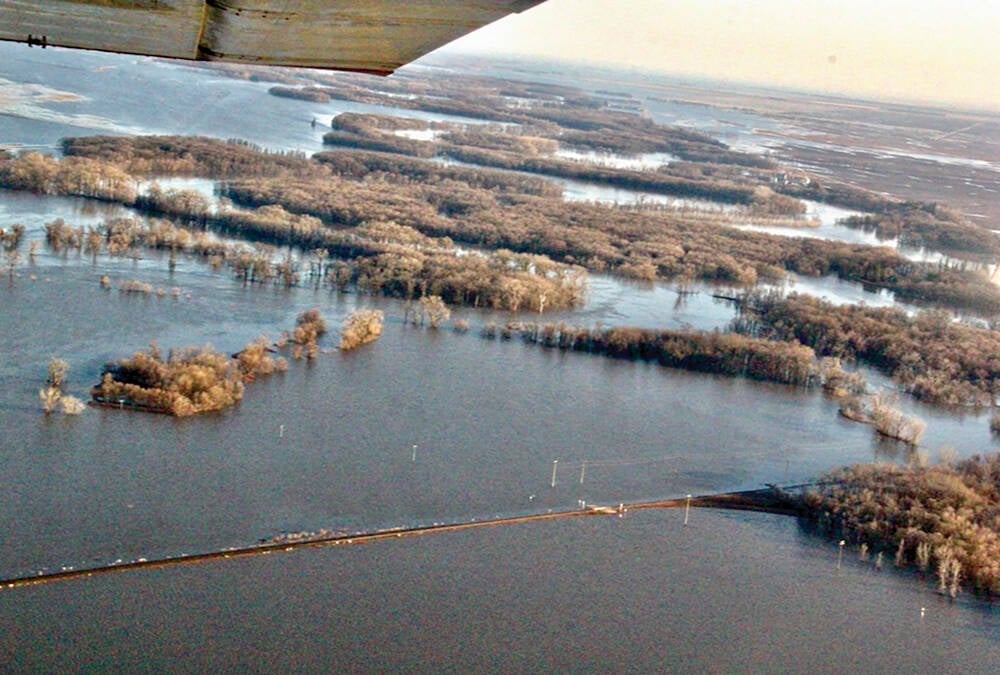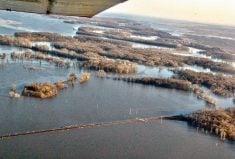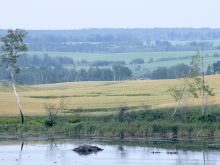Stefan Horlatsch was 12 when the genocide began in 1932.
Last week, the 87-year-old who grew up in the Zaporizhia region of eastern Ukraine implored others to acknowledge what he remembers as if it were yesterday.
He is a survivor of Holodomor, the great famine imposed by Stalin’s communist government on the farming peasants of Ukraine. An estimated 10 million Ukrainians died from starvation in the heart of Europe’s breadbasket in 1932-33.
A remembrance flame is making its way around the world to mark the 75th anniversary of the genocide. Horlatsch escorted the flame to the steps of the Saskatchewan legislature April 29.
Read Also

Rural Manitoba resources slim on natural disaster planning
A study from Brandon University’s Rural Development Institute has found that many rural and small municipalities don’t have the staff or resources to make formal climate plans against natural disaster.
He and others asked the provincial government to designate the fourth Saturday in November as an official day of remembrance.
“It is not very pleasant to remember,” he said.
But he must.
He devoted his life to promoting freedom after surviving the genocide that took so many, including 11 members of his extended family.
Horlatsch was the eldest of five children who lived on a farm with their mother. His father had been sent to Siberia along with many of the other men in the area.
The Soviet government seized the family’s land, livestock and grain. It imposed grain quotas that in some cases took away farmers’ last seeds.
But Horlatsch’s mother was strong, deeply religious and smart. About three years before the Stalin government started confiscating food and insisting on internal passports, with the exception of farmers, she believed something bad was going to happen.
“She was baking bread and making bread crumbs out of it and hiding it in different places like the stable, in the house, in the ground,” Horlatsch said. “From time to time she was digging it out and we were using two or three spoons of bread crumbs with hot water.”
They all survived.
Several houses away, his 11 cousins did not. He went to visit once and found three of them dead and the others too weak to bury them.
At the height of the forced starvation, people were dying at a rate of 25,000 per day, or 17 each minute. One-third of the victims were children; many other children were orphaned.
While this was happening, the Soviet government was dumping grain on western markets.
It ceased publishing census data in 1932, and those who conducted the 1937 census showing the staggering population decrease in Ukraine – about 25 percent – were shot and the results suppressed.
Horlatsch, a retired teacher who lives in Toronto, said this type of atrocity must never happen again. He wants the event to be included in history books and school curriculum so the world knows what happened.
Saskatchewan’s education minister, Ken Krawetz, said there has been discussion about making the information available to social studies teachers.
Premier Brad Wall also said the government would consider designating a day of remembrance. Other provinces are doing the same.
The remembrance flame is travelling through 33 countries. Its trip began in Australia April 1 and will end in Ukraine Nov. 1.















